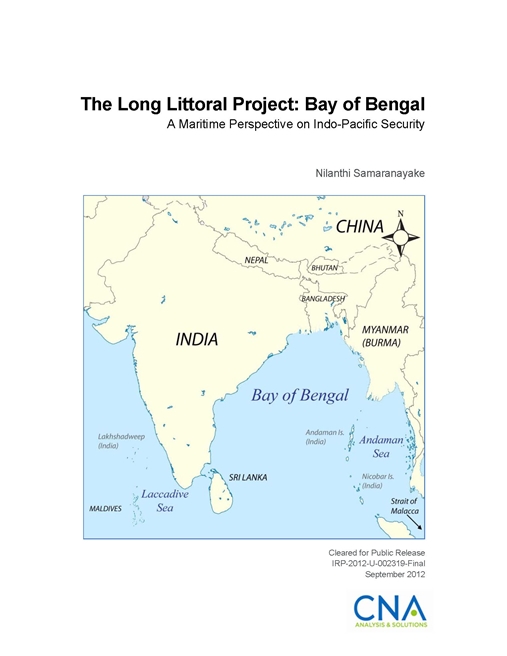China’s economic and security interests have resulted in a greater Chinese presence in the Indian Ocean region, much to the concern of India. China has cultivated economic relationships with Bay of Bengal countries through infrastructure projects such as port development, power plant construction, and railway and road building in littoral countries. Indian strategic planners worry that Chinese influence in these Indian Ocean outposts could turn them into military bases that would enable China to “encircle” India.
However, a single-minded focus on these sites as likely nodes of Chinese influence does not capture the entire story, because the rationale behind these developments is more economic than strategic. Beijing is trying to connect its western provinces to the globalized economy by constructing lines of communication south to the Bay of Bengal. That said, there are strategic concerns at work as well which are addressed below.
India is undertaking a major modernization of its navy and is increasing bilateral and multilateral naval ties in the Bay of Bengal. Partly in response to China and partly as a power rising on the world stage, India has begun upgrading its tri-service Andaman and Nicobar (A&N) Command, allocating greater resources to the Eastern Naval Command (located along India’s Bay of Bengal coast), and increasing navy-to-navy ties through forums such as the Indian Ocean Naval Symposium and the MILAN exercise. In response to increasing Chinese presence, India has embarked on infrastructure development projects of its own in Bay of Bengal countries, including in Burma and Sri Lanka. If New Delhi’s intent is to make Beijing more aware of its own vulnerable sea lanes, it appears to have succeeded. Chinese strategists, already worried about China’s “Malacca Dilemma,” recognize that the A&N Command puts India’s naval and air power in a position to control access to the Strait of Malacca and, hence, to the South China Sea.
The strongest manifestation of Sino-Indian rivalry in the Bay of Bengal has been in Burma. This is due to the confluence of both countries’ domestic and strategic interests in a neighbor that both Beijing and New Delhi want as a friend: a political friend as well as a neighbor that can provide them with access to the Bay of Bengal (from Yunnan province in China and from India’s northeastern states). However, developments within the past year regarding Western engagement with Burma appear to have taken some of the wind out of the sails of burgeoning Sino-Indo competition. Burma now has more options. While strategic concerns still animate both China and India, both countries are actually pursuing the same objective—access through Burma so that their landlocked underdeveloped areas can develop economically.
India’s strong ties with Sri Lanka, Bangladesh, and Maldives do not support the notion that a China-India competition is developing in these countries. Pointing to China’s infrastructure development projects in the smaller South Asian countries, some observers are concerned about China’s increasing activity in an area that India has traditionally considered its sphere of influence. For example, discussion about a China-India competition in the Bay of Bengal often centers on China’s development of a new port in Hambantota, Sri Lanka. Many Indian analysts fear the potential for China to use this port as a naval base. However, the reality is that Hambantota’s geographic proximity to India would render it vulnerable as a Chinese naval base. Furthermore, Bangladesh, Sri Lanka, and Maldives depend too much on India for various diplomatic and military dealings that they cannot afford to sacrifice by seeking a privileged relationship with China. Examples include Sri Lanka’s growing defense ties with India; and Bangladesh’s recent improvement in border relations with India and bilateral agreements that are close to being signed over water-sharing and transit rights. Finally, territorial propinquity and ethnic and historical ties are such that these smaller neighbors of India, especially Maldives, are not keen to deliberately antagonize New Delhi.
Download reportCleared for Public Release. Distribution Unlimited.
Details
- Pages: 58
- Document Number: IRP-2012-U-002319-Final
- Publication Date: 9/17/2012
